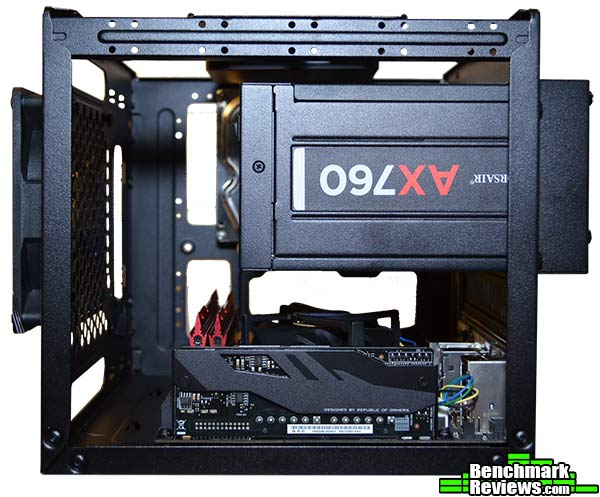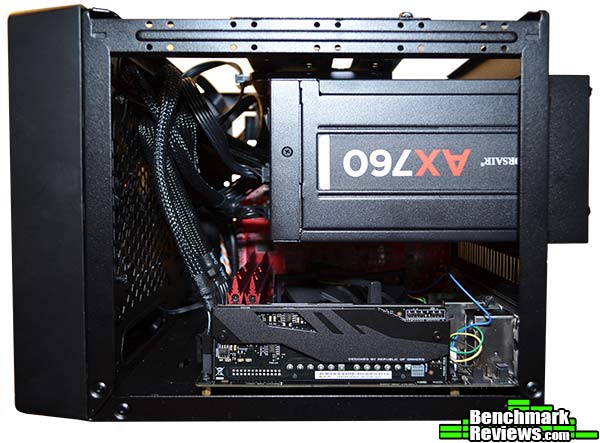PAGE INDEX
Testing & Results
With any computer case, aside from testing airflow, I will show you just how tight this case can get! I want to demonstrate photographically just how little room “goes to waste”! Now one thing that I wholeheartedly recommend is a modular or at least semi-modular PSU.
Also if you have the skills and you’re very comfortable doing so, I recommend using modified or short PSU cables if at all possible. This will greatly aid you in cable managment.
Test System Specs
-
Motherboard: ASUS Maximus VI Impact LGA 1150 Intel Z87
-
System Memory: G.Skill Trident X-Series 16GB (2 x 8GB) DDR3 SDRAM
-
Processor: Intel Core i5-4670K Haswell 3.4GHz LGA 1150 84W Quad Core
-
Audio: On-board
-
Video: VisionTek Radeon HD 4670 1GB
-
Disk Drive 1: Samsung 1TB HDD
-
Disk Drive 2: Samsung 840 Pro SSD
-
PSU: Corsair AX Series AX760 760W
Ideally, the top down view of your case should look something like this, take note that the PSU draws air from the top and will exhaust it out the back, making it effectively no help to your airflow at all. Here you can also see a closed water-cooling loop installed. If y
If you choose to go the closed water-cooled loop option, note that you’re limited not only on the size of the radiator, but on the thickness of your water lines, as you can see here, they tend to press somewhat awkwardly against the PSU. This makes me very worried of installing a closed water-loop in this system, as only time will tell what kind of strain this will cause on the lines and the barbs.
With the system assembled, and no cables attached yet, the Cooler Master Elite 110 Looks very sleek. Even with the extruded PSU bracket.
But, add the minimum amount of cables needed, and you get a very different looking monster! Granted these are standard length cables that came with the AX760. I think shortened or at least shorter cables would greatly benefit someone building in a case of this stature.
To the best of my ability, I attempted to route these cables as much out of site as possible. The 24-pin motherboard connector and its very stiff cable, proved to be the biggest challenge in terms of placement. But when it was all said and done, it finally fit together quite nicely.
Build Results
With standard length PSU cables, cable management is going to be a bit of a chore, but if you can get it right the first time, then you won’t have too many problems. However, in order to service anything on the motherboard, or replace the 80mm fans or hard drive. Then you’re going to have to either remove the PSU, undoing much of your cable management efforts, or find someone with small hands to get down in there for you.










Most Recent Comments